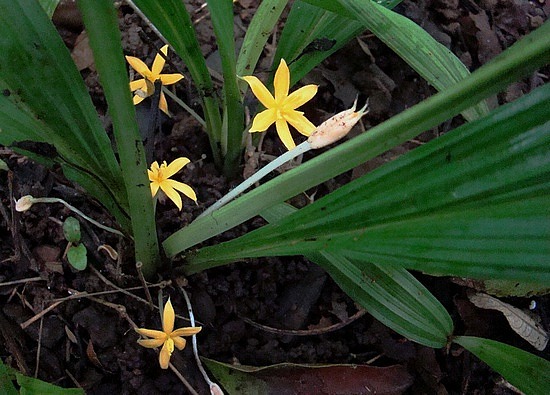| PlantID | 0056 |
| Botanical Name | Curculigo orchioides |
| Common Name | Musli |
| Classification | | Kingdom: | Plantae | | Subkingdom: | Tracheobionta | | Division: | Magnoliophyta | | Class: | Magnoliopsida | | Subclass: | Liliidae | | Order: | Asparagales | | Family: | Hypoxidaceae | | Genus: | Curculigo | | Species: | orchioides |
|
| Part used | Whole plant, tuber, leaf, root-stock |
| Medicinal Properties | Root-stock: sweet, cooling, bitter, emollient, diuretic, aphrodisiac, depurative, alterant, appetiser, carminative, viriligenic, antipyretic and tonic.
|
| Medicinal Use | Root-stocks: useful in leucorrhoea, haemorrhoids, pruritis, skin diseases, asthma, bronchitis, jaundice, diarrhoea, cuts and wounds, dyspepsia, colic, vomiting, ophthalmia, lumbago and gonorrhoea. Other parts are useful in anemia, blood dysentery, bone fracture, cooling of stomach, diabetes, hemicarmia, headache, low blood pressure, menstrual disorder, profound weakness, rheumatism, and ring worm.
|
| Chemistry | Saponins, curculigo-saponin, sapogenins, curculigenin, phenolic glycosides, corchioside, curculigoside, chlorophenyl glycosides, triterpene alcohol, curculigol, pentacyclic triterpene, aliphatic compound, cycloartenol and sucrose.
|
| Cultivation | NA |
| Regional Habitat | Frequently occurs in hilly areas at large scale. Rarely occurs in plains.
|
| Description | A herbaceous tuberous geophilous perennial. Root-stock: short or elongate, bearing several fleshy lateral roots. Leaves: simple, crowded on the short stem, sessile or short petioled with sheathing leaf bases, linear or linear-lanceolate. Flowers: bright yellow, the scape usually very short and hidden among the bases of the leaves underground, the lowest flowers bisexual, the upper male. Fruits: capsules, derived from inferior tricarpellary syncarpous ovary, 1-4 seedes. Seeds: black, oblong, deeply, grooved in wavy lines. Flowers appears during November-December.
|
| Image |  |


